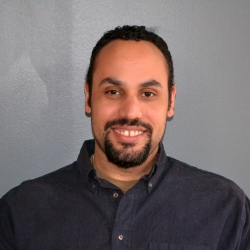Feb
14
2014

Written by Sean Thomas-Breitfeld
This past week, an article about Black History Month by Theodore Johnson in The Atlantic really moved me. Johnson writes that our focus on historical icons makes this month of celebration too disconnected from people’s everyday experience. I share his concern on a personal level but as someone with a particular focus on organizations, I also worry that our tendency to present Black history through the lens of “extraordinary human beings” obscures the importance of groups of regular people coming together, creating community and establishing the infrastructure needed to not just make change but defend and sustain it. There’s another way to tell our history and understand progress – through the lens of collective stories, shared leadership, and the slow, steady march toward justice.
Organizational development experts and consultants have been warning the corporate sector about the problem with heroic leadership for years. But just as CEOs still get elevated to hero status, in the justice sector we still seem enamored with heroic leaders and organizational forms that focus on a single figure at the top of a pyramid. On a call with our Project Team earlier this week, Dushaw Hockett said that even though we talk about the importance of community and collective leadership, it still seems that the sector just wants heroic leaders. I think that his point is proven by the profiles on inspiring organizational leaders in progressive media, and the handful of well-known leaders who tend to attract a lot of funding. What actually distinguishes those organizational leaders as movement leaders is that they work in collaboration and alliance with other groups, and use their privilege to operate as the “rainmakers” for collective projects to ensure that the full continuum of movement infrastructure – from local groups to national alliances – gets the support needed to make and sustain change.
Just as movement leadership is often framed in an individualistic, hero-worship way; movement outcomes are too often measured only in terms of great strides forward. As a result, the slow and steady work of organizing and cultivating grassroots leadership often gets overshadowed by the big campaigns to turn red states blue and win new laws. There is no doubt that big policy change is both necessary and possible, but I also think of the organizers in the south who talk about too often being simply flown over because national media and funders can only see opportunity in the big and new and quick. Groups like BOLD (Black Organizing for Leadership and Dignity) are critical for the future of the Black justice struggle because they are rebuilding Black social justice infrastructure as part of a long-term endeavor.
When I used to train on community organizing, one of the hardest things for people to get the hang of was the practice of telling a “story of us” – a story of the group of activists committed to working in a team to achieve social change. But this challenge of crafting a story that makes room for details about the unsung heroes who may never make speeches, but nonetheless contribute to the struggle … those are the stories that help everyone see themselves as part of a community of change. To challenge the tendency to focus on heroic leaders, I always used the Ella Baker quote: “what is needed is the development of people who are interested not in being leaders as much as in developing leadership among other people”. It’s no surprise that the godmother of SNCC promoted a shared leadership structure within the organization, a practice we are just beginning to uncover in the sector today.
Johnson writes in his article that we should use this month as a time to “combat the lazy labels plastered on the black experience;” and we should also combat the ways we lazily think about our history as if our collective liberation can be won by individual leaders. Today, just as in decades past, we need the involvement and commitment of masses of people – not a handful of heroes – to right the wrongs of inequality, poverty and racism.
